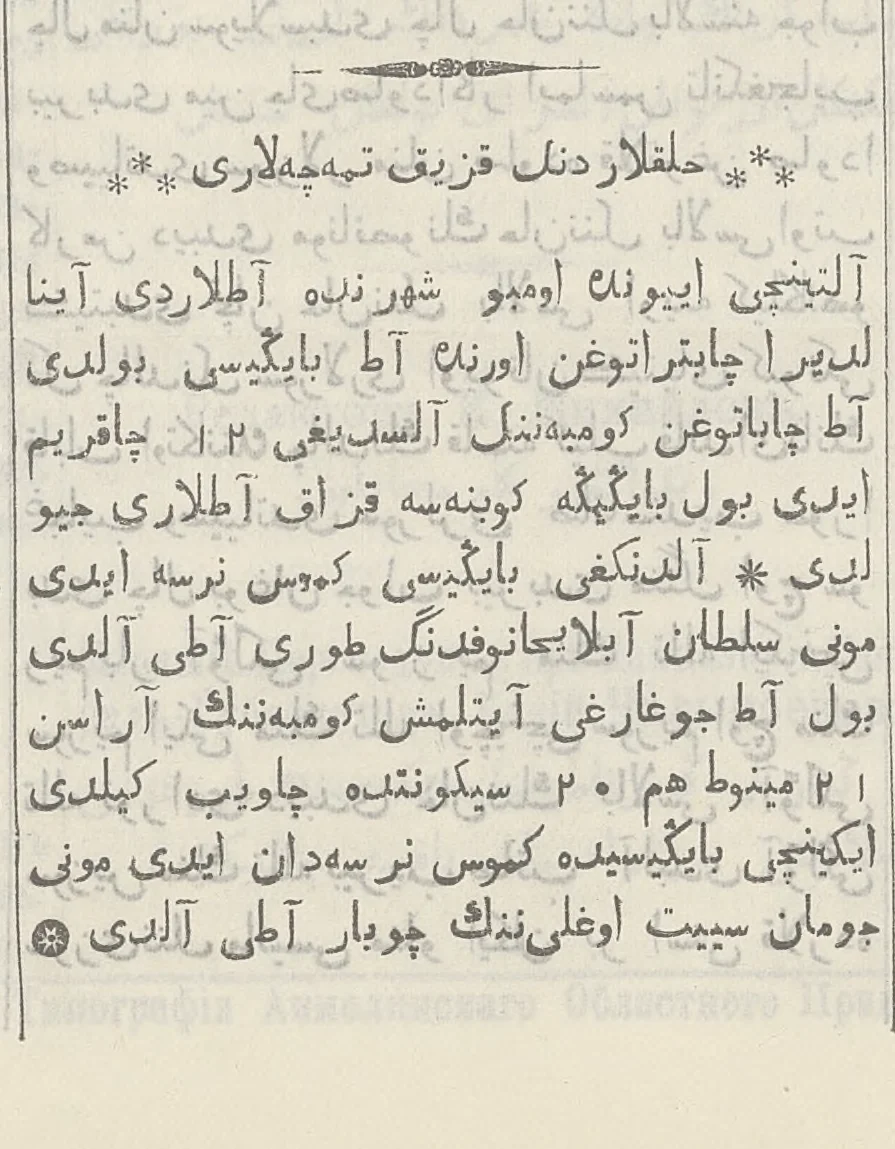As the nineteenth century gave way to the twentieth, a great wave of awakening surged through Kazakh intellectuals, sparking a passionate quest for knowledge. This outpouring of intellectual zeal led to an explosion of new magazines and newspapers being published in Kazakh, heralding the dawn of a new era in sharing culture. However, what these intellectuals wrote went beyond only spreading knowledge. Soon, a variety of publications emerged, covering topics like business, society, politics, art, and humor. Qalam invites you to explore snippets from Kazakh publishing culture and history, offering a glimpse into the important issues of the past.
In the late nineteenth and early twentieth centuries, the city of Omsk served as the capital of the Steppe region, which covered a vast area, much of it now modern-day Kazakhstan. According to the 1897 census, nearly half of the city’s population was Kazakh, making their cultural influence and traditions a big part of local festivities.
A glimpse of this cultural mix can be found in the June 1894 issue of the Kirgizskaia Stepnaia Gazeta, which described the celebration of baige, one of the most popular forms of horse racing among Turkic peoples:

On 6 June, Omsk hosted thrilling horse races at the city's racetrack, covering a challenging 12-versti
On 29 June, the city will host a grand public celebration featuring another race on a 10-versti
The festivities promise a lively atmosphere, with bicycle races, a theater performance, two musical choirs, singers, a fireworks display, and a hot air balloon.
The entry fee is a modest 15 kopecks.
The winners of these Omsk horse races are Kazakh names steeped in history. Juman Seitov, the silver prize winner, was likely the father of Asylbek Seitov, a doctor and prominent member of the Alash party. Asylbek would face a tragic fate, being executed in 1937 amid political purges.
The race’s first-place winner, Sultan (Medelkhan) Ablaikhanov, was a direct descendant of Ablai Khan (1771–1780/81), the khan of the Kazakh khanate. In Omsk, Sultan Ablaikhanov held a position in the office of the governor-general of the Steppe region, where he served as a translator and was one of the editors of the Kirgizskaia Stepnaia Gazeta.
The Kirgizskaia Stepnaia Gazeta (in Kazakh, Dala Uälaiatynyñ Gazetі) was a special supplement to the Akmolinsk (1888–1905), Semipalatinsk (1894–1905), and Semirechensk (1894–1901) regional gazettes. It was published in Omsk in Russian with additional content in Kazakh.




